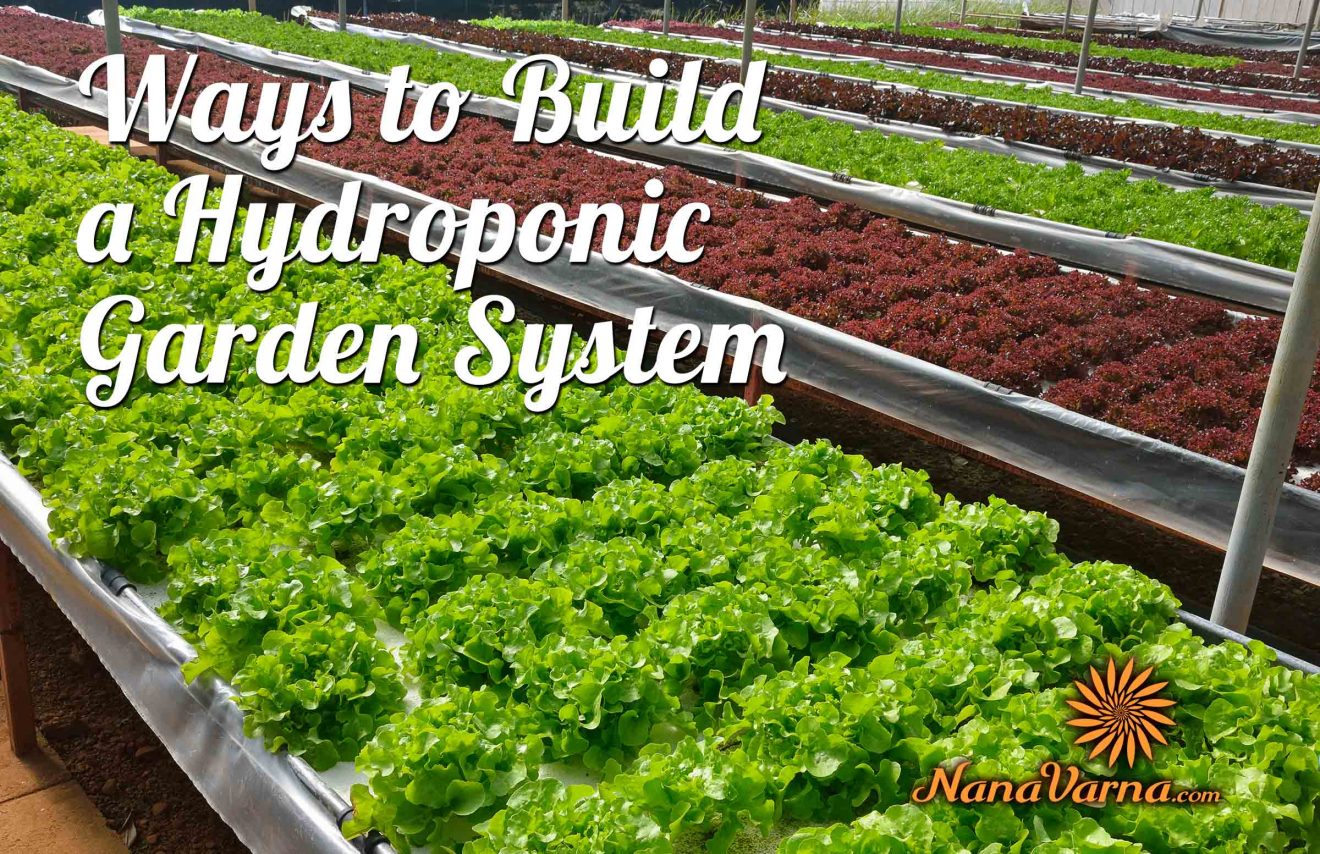Sustainability is the need of the hour, which is, unfortunately, turning out to be a hot trend these times due to the rising emergence of global environmental issues. Incessantly cutting down trees, melting glaciers, pollution crises, and global warming hitting the highest peaks of all times place sustainable solutions in demand.
Thus, focusing on the use of environment-friendly options to reduce the harmful impact on Earth, there is a need to adopt a mindset that focuses on ethical food production techniques and ensuring maximum conservation. Therefore, it has led to the birth of the Hydroponic Garden System.
The term Hydroponic Garden System derives its name from “hydroponics” which stems from two words, “hydro” meaning water, and “ponics” meaning “labor”. To state it in simple terms, a Hydroponic Garden System is a type of gardening that doesn’t require soil. Instead, this method of growing plants uses water, nutrients, and a growing medium. Due to these features, this type of crop production has an upper-hand over the traditional soil-grown crop production.
Why is a Hydroponic Garden System needed?
- Operating a Hydroponic Garden System is convenient and takes up less surface area
- It allows us to grow food produce in any location such as a terrace, basements, garages, warehouses, classrooms, etc.
- It does not require too many or big pieces of equipment
- Can produce 3 to 10 times more crop production than traditional soil-grown methods
- A well-operated Hydroponic Gardening System caters faster produce as it fulfils the optimal requirement of water and essential nutrients
- The nutritional value of the product increases with decreased time consumption and harvesting period.
- Its indoor technique makes it viable to grow plants in places with unfavourable weather and soil conditions
- It is better than field farming as soil farming is more prone to pests and insects, and lacks proper water intake and nutrients
So, if you are thinking about growing a Hydroponic Garden System yourself, this article is definitely for you. But, before we go into the details of how to build such systems, it’s useful to know the plants that one can grow without any hassle.
For a beginner, the starting options might be:
Greens – Lettuce, Kale, Spinach, Swiss chard
Herbs – Basil, Cilantro, Mint, Oregano, Parsley
Fruiting plants – Hot peppers, Strawberries, Tomatoes
Now that you have got an idea of what Hydroponics is and the plants that can be grown using it, let’s have a look at ten easy ways to build a Hydroponic Garden System.
1. Mason Jar Kratky Method:
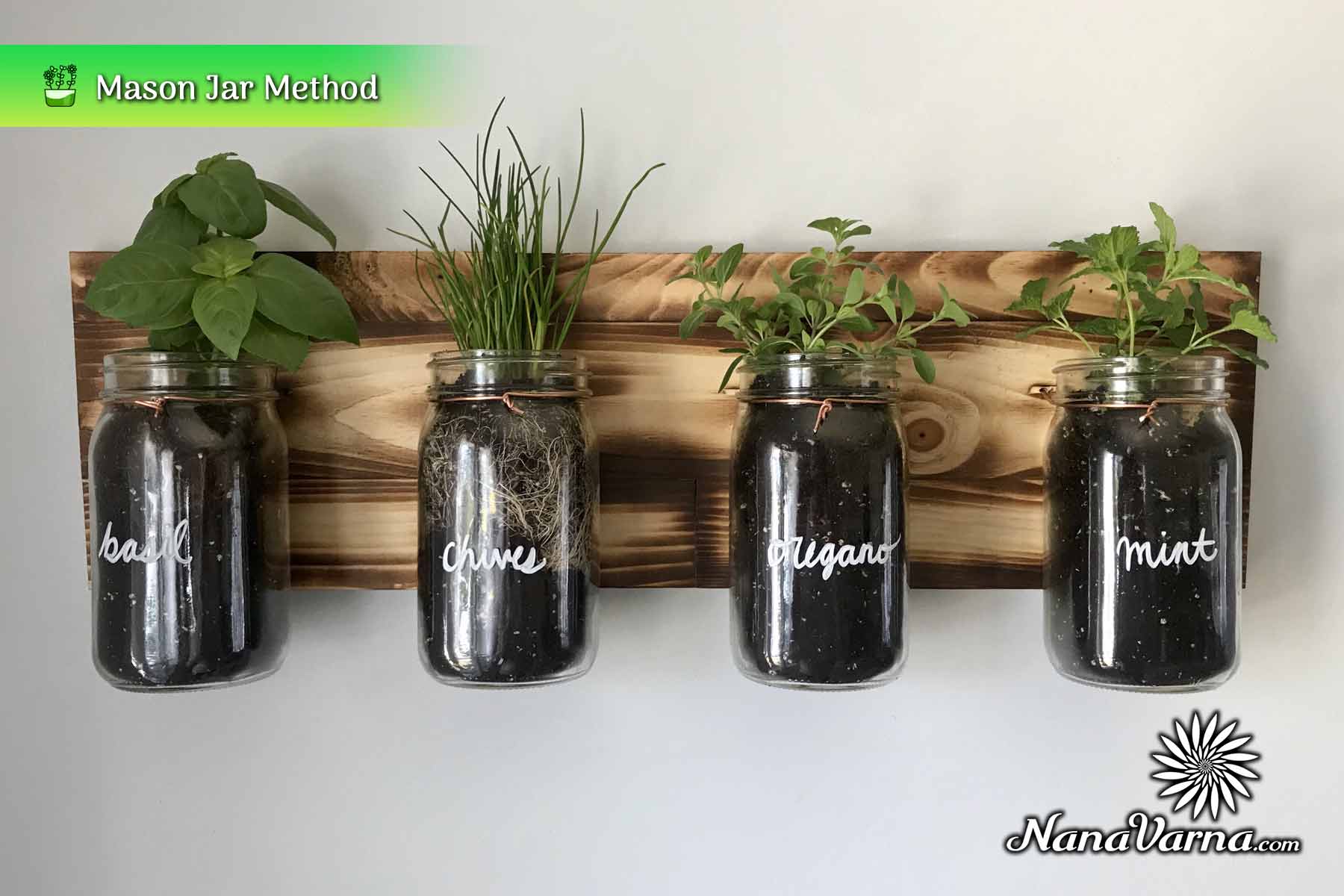
This method named after B.A. Kratky uses a passive hydroponic technique, which means that it requires no pumps or electricity during the growth cycle as well as no additional water or nutrients after the original supply.
- Ideal for Green vegetables (lettuce, spinach), fruiting plants (tomato), herbs
- Components: Bucket, growing media (rock wool, coconut coir, hydroton, perlite), net pots/cups, hydroponic nutrients
- Method: Place the plants in net pots with the inert growth media. Suspend net pots above the water reservoir (bucket) that contains essential nutrients in solution, with the root tips in contact with the reservoir.
2. Simple Desktop Hydroponic System:
This system, as the name suggests, can be placed on a desk or a table. It is preferable for those who lack space.
- Perfect for Small plants (herb, lettuce)
- Items: Coffee can/half-gallon bucket (main container), net cups, growing media, bubbler
- Procedure: The plant is kept in a net cup with a medium like rock wool so that it can stay on top and can be retrieved.
3. Simple Bucket Hydroponic System:
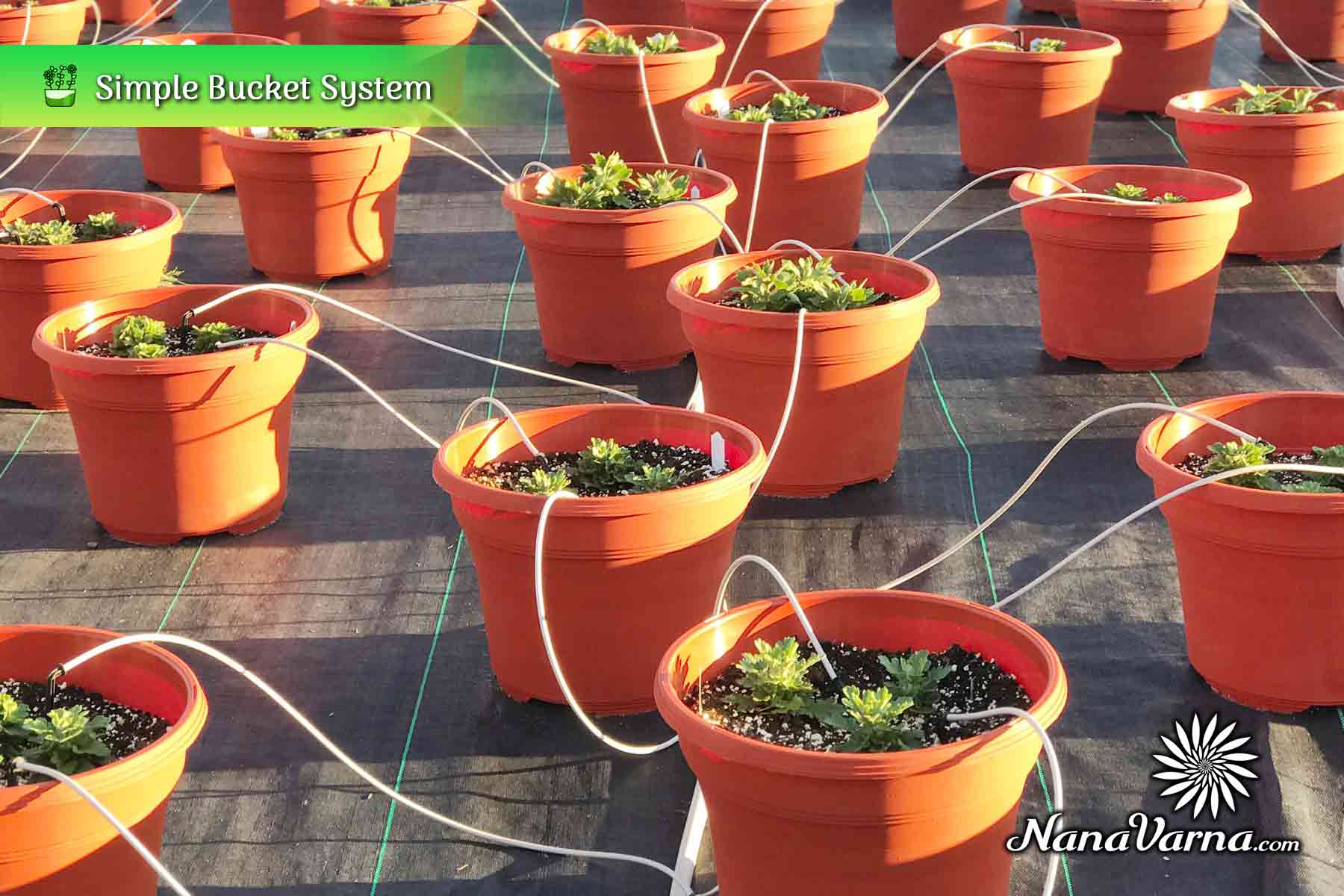
- Suitable for Single large plants
- Constituents: 5-gallon bucket, growing media (coco coir or perlite-vermiculite), and nutrient mix
- Technique: The growing media moves nutrients up to the roots of the plants by capillary action so that the plants are uniformly moist.
4. Ebb and Flow:
Also known as the Flood and Drain, this is one of the most common types, as well.
- Advantage: Inexpensive
- Apt for Fast-growing lettuces or herbs (rosemary)
- Non-ideal plants: Thirsty plants (tomatoes)
- Units: Storage tray, pump, timer
- Process: It uses a storage tray or tote to house the entire grow plants. The plants grow in a medium that is flooded with nutrient solution for a few minutes at regular intervals. This system requires a pump as well as a timer for automated operation.
5. PVC Nutrient Film Technique (NFT) Hydroponic Garden System:
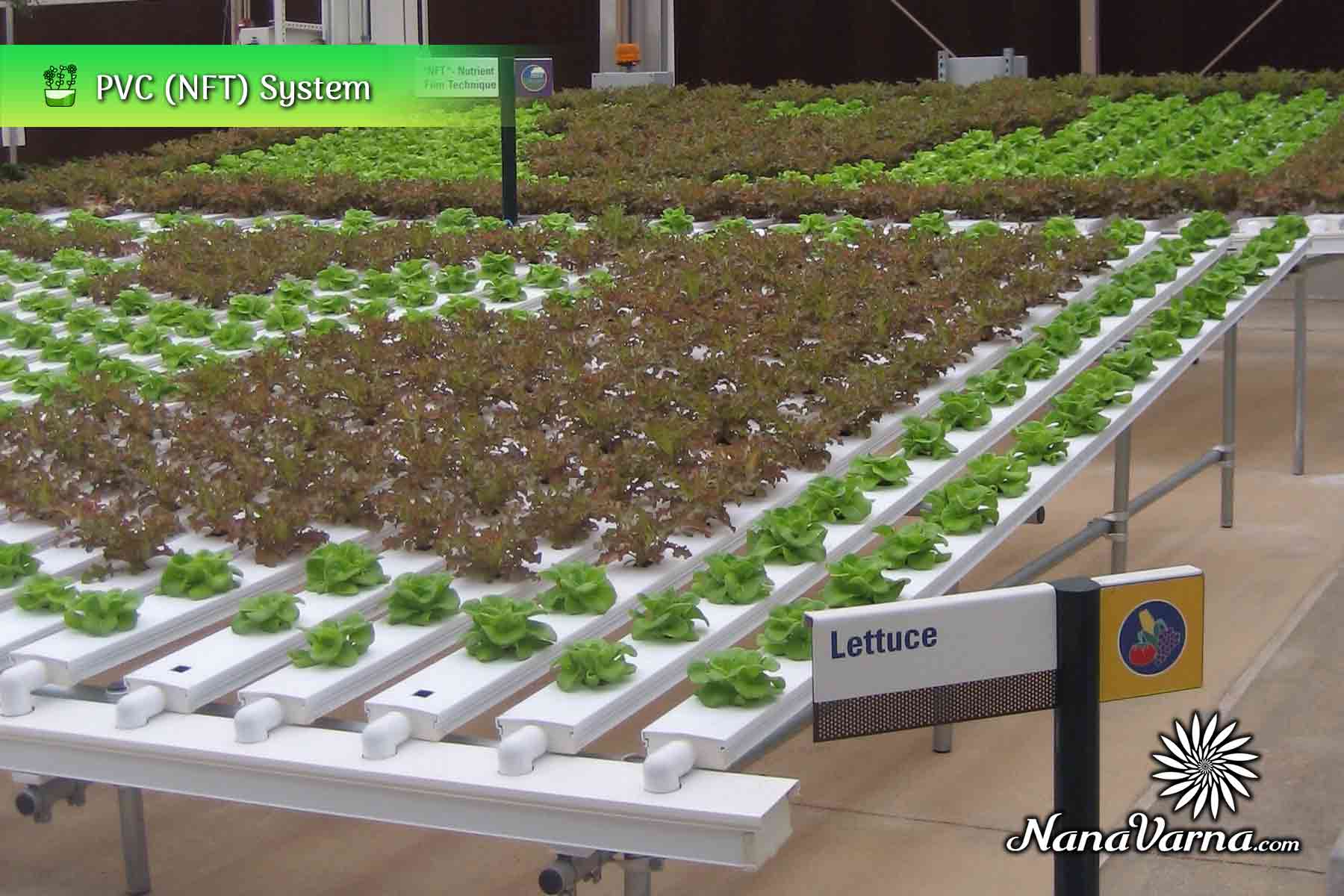
It is one of the versatile methods and a bit similar to the Ebb and Flow type, with a closed system and used in a small area. It can be used for about 20-40 plants.
- Appropriate for Small plants (tomatoes)
- Elements: Large 4 inch PVC pipes, growing media (coco coir or perlite-vermiculite), and nutrient mix
- Mechanism: Place the plants in cups arranged in holders which are drilled into the pipes. The system uses a reservoir and a pump for water requirements. The water circulates between the pipes and the reservoir.
6. Hydroponic Grow Box:
This system is very convenient as it is portable.
- Materials: Net cups, PVC pipes, a submersible pump, irrigation sprinkler, storage tub or bin with a lid, nutrients, water
- Approach: Place the plants in net cups filled with growing medium. The lid of the box houses the net cups. The setup of PVC pipes, submersible pumps, and irrigation sprinklers deliver the nutrients and water to the plants.
7. Vertical Window Farm:
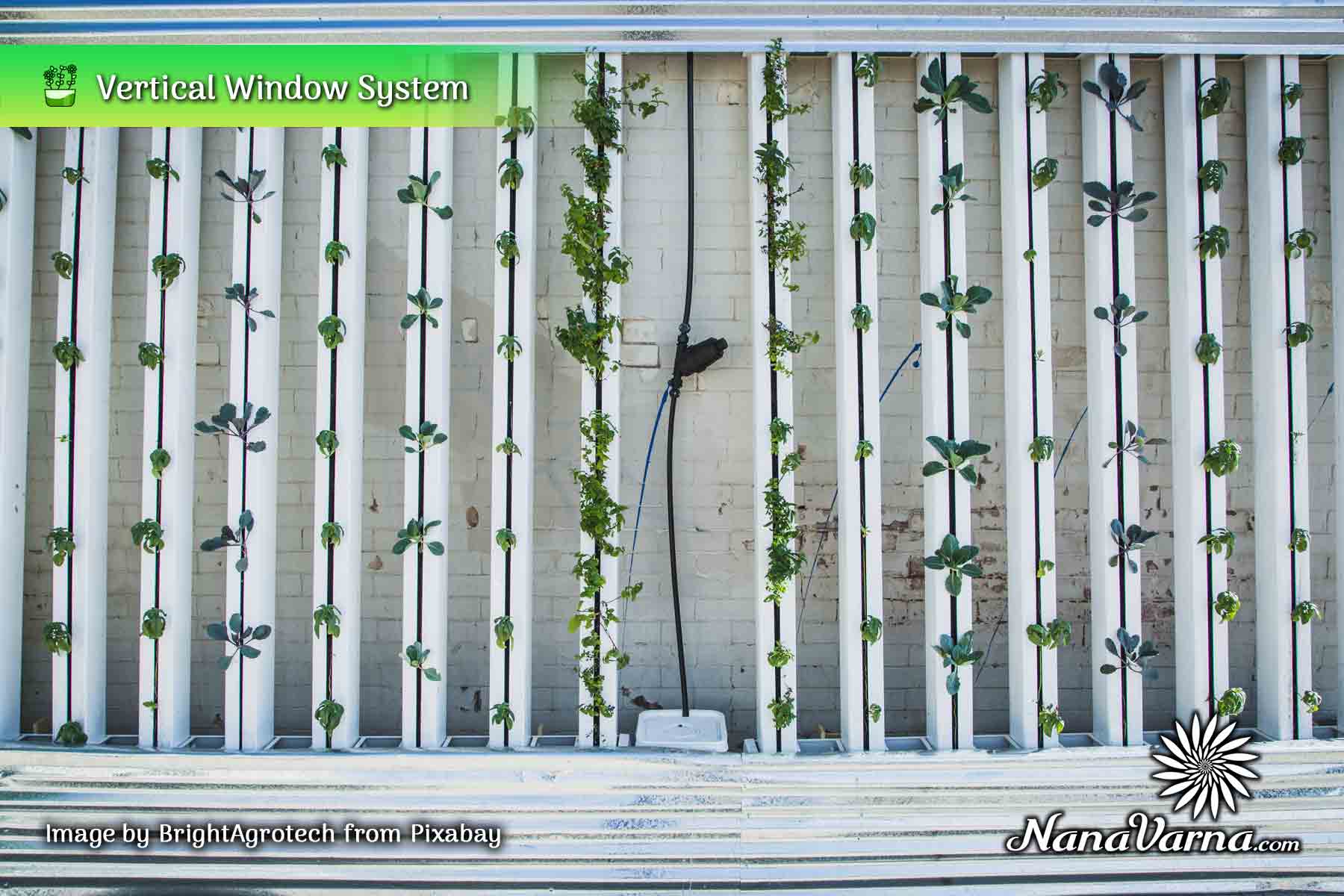
This method uses containers such as recycled water bottles to keep the plants in a vertical rack setup.
- A classic for Chard, herbs, kale, strawberries
- Substances: Recycled water bottles, tubes, nutrients, water
- Methodology: In this setup, natural sunlight provides lighting. It uses pipes or tubes to bring nutrients from the reservoir to the plants.
8. Dutch Bucket or Bato Bucket System:
This system is a variation of the Ebb and Flow method and uses Dutch buckets, also known as BATO buckets. These are containers that can be used in Hydroponics in a lot of ways.
- Feasible for Large plants (Tomatoes, cucumbers, peppers, eggplant)
- Integrants: Reservoir, pump, tubes
- The course of Action: The plants are placed in buckets that are arranged in rows. Water is supplied through a setup of tubes. A feed line conducts water to the buckets from above, and a return line runs water away from below.
9. Deep Water Culture (DWC) Hydroponic System:
Being one of the simplest hydroponic systems to use, it is very convenient for starters.
- Edges: Calls for minimal equipment and supplies; low maintenance
- Best suits Green vegetables (lettuce, spinach), fruits plants (tomatoes)
- Required Materials: Opaque plastic storage box container, bubbler, air hoses to pump in oxygen into the nutrient solution
- Plan: The opaque plastic box is used as a primary nutrient solution container. Fill the reservoir with the nutrient solution and suspend the roots of the plants in the solution to provide a continuous supply of nutrients, water, and oxygen. The bubbler and air hoses are used to provide oxygen to the solution.
10. Wick System:
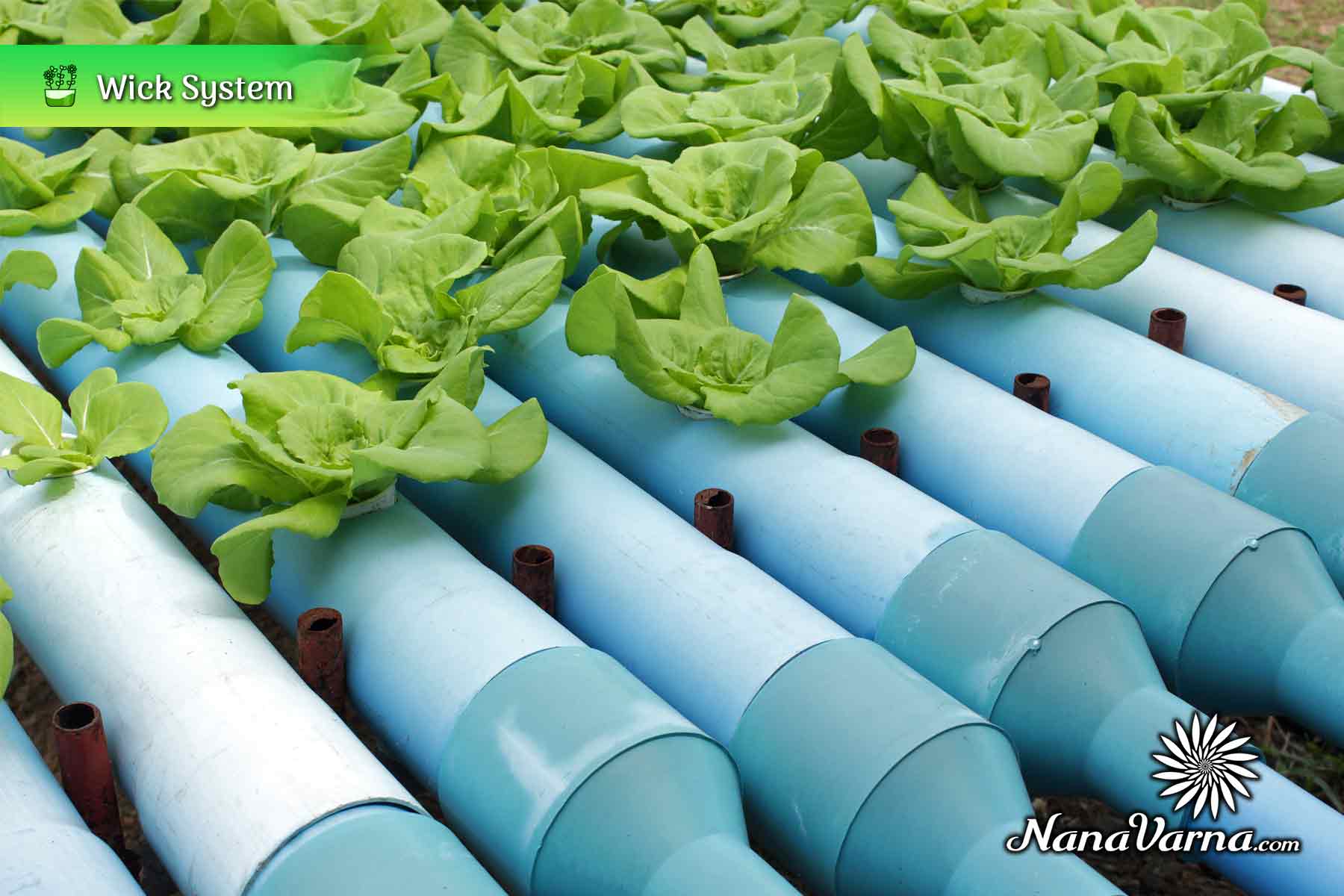
A passive system, i.e., does not include any moving parts.
- Benefits: It is cheaper and easier to maintain than a system such as Ebb and Flow
- Drawback: Lesser efficiency. One cannot use it in cases of plants which require high maintenance or which use high amounts of water (Tomatoes)
- Most applicable for Fast-growing lettuces or herbs (rosemary)
- Necessaries: Wick, grow tray, reservoir, and aeration system
- Modus operandi: This type uses capillary action via two or more wicks to deliver water from the reservoir to the roots. In this system, roots are always in contact with water.
This trend of using soil-less farming is a preferable choice as it helps in numerous ways. Now, get to know how a Hydroponic Garden System is beneficial in saving our Mother Earth:
- Requires lesser usage of water, with up to 90% more efficient use than the traditional soil-grown crop production
- Allows the constant reuse of nutrients and water supply
- Can be set up even on a small piece of land
- No use of chemicals or pesticides
- Reduces the rate of soil erosion
- Minimises emissions and carbon footprints associated with crop production and transportation
Consequently, a Hydroponic Garden System is undoubtedly a well-suited and eco-friendly choice to make our planet a better living place. It offers various benefits to our planet that are impossible with conventional food cultivation. It is absolute to hope for more such practices booming in the market with the growing time and advancements.
So, what’s the thought running in your mind now? Curious to build a Hydroponic Garden System? Well, then get started and build a healthy lifestyle!














